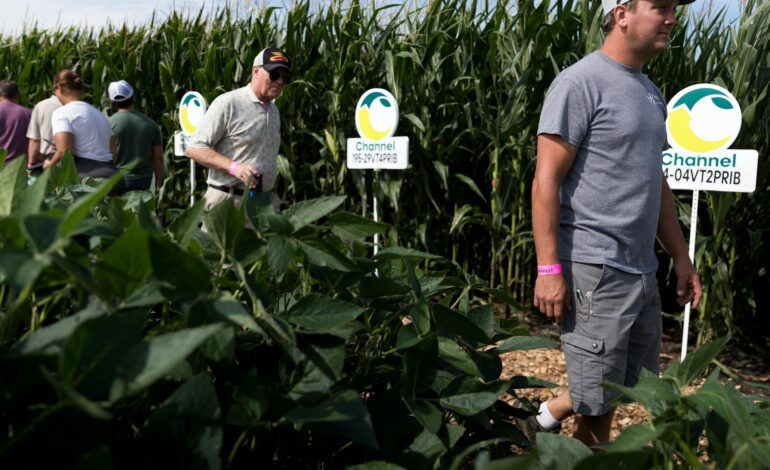Minnesota Farmers Request State Intervention Amid Foreclosure Crisis

MORGAN, MINN. – A significant financial crisis is unfolding among Minnesota farmers, prompting hundreds to seek assistance from the state as foreclosure threats loom. The number of farmers requesting state mediation with their lenders has surged to levels not seen since 2016, according to data from the University of Minnesota Extension. In June, a total of 197 farmers filed for help, with July witnessing an alarming jump to 306 notices, marking a four-fold increase compared to the same month in the previous year.
The agricultural community is grappling with deepening anxiety fueled by falling commodity prices, reminiscent of the devastating farm crisis of the 1980s. Garen Paulson, an extension educator specializing in business management, highlighted that approximately 20 percent of farmers are facing significant challenges. He emphasized the collective impact on rural neighborhoods, stating, “That doesn’t sound like a lot, but think of your neighbors. That’s a pretty good size measure.”
Market Struggles and Rising Debt
The ongoing turmoil in global trade has exacerbated the situation, with farmers like Gene Stengel from Yellow Medicine County contemplating the sale of land or assets. Stengel, who has been farming since the early 1970s, admits that “you can’t sustain the losses,” as he faces mounting pressure from banks regarding loan repayment options.
Currently, low commodity prices, particularly for corn and soybeans, are at the heart of the crisis. This August, soybean prices, a key export for Minnesota valued at over $4 billion, are trading for less than $10 per bushel. In contrast, prices exceeded $12 per bushel in the spring of 2024. The situation has led to fears that farmers may lose money on every acre cultivated this year.
The agricultural sector, valued at $106 billion in Minnesota, is not only coping with falling prices but also with rising operational costs. Increased expenses for seeds, fertilizers, and insurance, compounded by adverse weather events, have placed additional strain on farmers’ finances. Sam Ziegler, director of GreenSeam, a southern Minnesota agricultural initiative, observed that farmers are tightening their budgets significantly, with only 38 percent planning to expand their workforce compared to 50 percent two years ago.
State Intervention and Support Programs
To address the mounting crisis, Minnesota’s Farmer-Lender Mediation program offers a temporary reprieve for struggling farmers. This program facilitates a “cooling-off period” during which farmers can negotiate payment plans and avoid immediate foreclosures. According to Beverly Durgan, Dean of the Extension, “No loans can be called, and all the creditors come to the table with the farmers.”
Several politicians have voiced their concerns regarding the agricultural plight. Senator Amy Klobuchar, the ranking member of the Senate Agriculture Committee, remarked on the pervasive fear among farmers, stating, “When these tariffs hit, they drive away markets, and [those export markets] don’t come back.” The ongoing trade policies and retaliatory tariffs have left many farmers uncertain about their futures.
As farmers like David Syring, who cultivates corn and soybeans on 1,500 acres near Granite Falls, face the possibility of financial losses, hope remains essential. Syring, who experienced substantial crop damage from heavy rains in June, expressed resilience, noting, “There’s a lot more harder days than there’s easy ones. But I can’t imagine a different life.”
While the state has provided some assistance, including a disaster relief bill passed by Congress late last year, many farmers are still left wondering when conditions will improve. U.S. Representative Brad Finstad, a farmer himself, emphasized the need for broader market access and diversification to reduce dependency on limited export partners.
As the agricultural community navigates these unprecedented challenges, the road to recovery appears long and fraught with uncertainty. The future of Minnesota’s farms will depend not only on weather and market conditions but also on effective government policies and support systems that recognize the vital role of agriculture in the economy.






